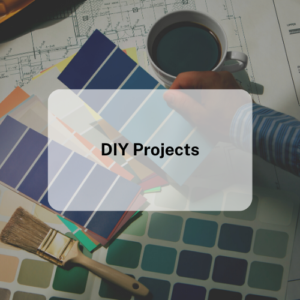Interior Design Service On a Budget
Interior design is the art and science of enhancing the interior of a building to achieve a more aesthetically pleasing and functional environment. It involves designing the layout and selecting colors, furniture, lighting, and accessories to create a space that reflects the personality and style of the occupants. Interior design services can be expensive, but there are ways to achieve a great interior design on a budget.
Determine Your Budget

When determining your budget for interior design, it is important to be realistic about what you can afford. Make a list of all the expenses you will incur during the project, including furniture, accessories, paint, and other materials. It is also important to factor in the cost of labor if you plan to hire professionals. Once you have a total amount, divide it into different categories such as furniture, decor, and labor to allocate funds accordingly.
When allocating your funds, consider prioritizing items that will make the biggest impact on your space. For example, investing in a high-quality sofa for your living room will make a bigger impact than purchasing an expensive rug. This will also allow you to have more flexibility in terms of the less important items, such as decor or accessories.
It is also important to be prepared for unexpected expenses that may arise during the project. Plan to set aside a small amount of your budget for unexpected expenses or emergencies.
Research and Plan

Before starting any interior design project, it is important to research and plan. This includes creating a mood board or Pinterest board to visualize your design ideas. You can also gather inspiration from interior design magazines, blogs, and websites.
Planning can also help you to prioritize your spending and make informed decisions about where to invest your funds. Consider the function of each room and the specific needs of your household when making decisions about furniture and decor. For example, if you have children or pets, you may want to invest in durable and easy-to-clean fabrics.
Another important aspect of planning is to consider the layout of your space. This can help you to make informed decisions about furniture placement and ensure that your space is functional and comfortable.
Focus on High-Impact Areas

When designing on a budget, it is important to focus on high-impact areas. These are the areas of your home that are most frequently used or that make the biggest impression on visitors. Some of the high-impact areas to focus on include the living room, dining room, and entryway.
In the living room, consider investing in a high-quality sofa or accent chairs. These items will be used frequently and can make a big impact on the overall look and feel of the room. You can also add inexpensive decor items such as throw pillows, blankets, and artwork to add color and texture.
In the dining room, invest in a high-quality table and chairs. This is an area where your family and guests will gather, so it is important to have a functional and comfortable space. You can also add inexpensive decor items such as placemats, napkins, and centerpieces to add color and texture.
The entryway is the first impression visitors will have of your home, so it is important to make it welcoming and inviting. Consider investing in a high-quality rug or a statement piece such as a mirror or console table. You can also add inexpensive decor items such as baskets, trays, and plants to add texture and personality.
Repurpose and Recycle

Repurposing and recycling are great ways to save money and add character to your space. There are many items in your home that can be repurposed or recycled into decor items. For example, old windows can be turned into picture frames, and old doors can be turned into tables or headboards.
You can also repurpose furniture by giving it a fresh coat of paint or reupholstering it. This is a cost-effective way to update your space without having to purchase new items. Consider using a neutral color palette when repurposing furniture, as this will allow you to easily incorporate the items into different rooms and design styles.
Recycling is also a great way to save money and promote sustainability. Consider recycling items such as glass jars, wooden crates, and wine corks into decor items such as vases, storage containers, and coasters. You can also find inexpensive decor items at thrift stores, flea markets, and garage sales that can be repurposed or incorporated into your design scheme.
DIY Projects

Another way to save money on interior design is to take on DIY projects. There are many DIY projects that you can do yourself that will add character and style to your space. Some easy DIY projects include painting furniture, creating a gallery wall, or making your own curtains or pillows.
When taking on DIY projects, it is important to be realistic about your skills and abilities. Start with simple projects and work your way up to more complex ones. You can also find tutorials and inspiration online to help guide you through the process.
Hire a Professional

Hiring a professional interior designer may seem counterintuitive when working on a budget, but it can actually save you money in the long run. A professional designer can help you to make informed decisions about where to invest your funds and can also help you to avoid costly mistakes.
When hiring a professional, be upfront about your budget and your priorities. A good designer will work with you to create a plan that fits within your budget and addresses your specific needs and preferences. They can also help you source materials and furniture at a discounted price.
Shop Smart

When shopping for interior design items, it is important to shop smart. This includes researching prices and comparing them across different stores and online retailers. You can also take advantage of sales and discounts to save money.
Another way to shop smart is to invest in quality items that will last for many years. This may require spending more upfront, but it will ultimately save you money in the long run by reducing the need to replace items frequently.
Finally, consider shopping at discount stores and outlets for furniture and decor items. These stores often carry high-quality items at a discounted price, allowing you to stretch your budget further.
In conclusion, designing your home on a budget is possible with careful planning and smart shopping. By prioritizing high-impact areas, repurposing and recycling items, taking on DIY projects, and shopping smart, you can create a beautiful and functional space that reflects your personal style and meets your specific needs.
Hiring a professional interior designer can also help you to make informed decisions and avoid costly mistakes. Remember to be realistic about your budget and allocate funds accordingly to ensure a successful interior design project.